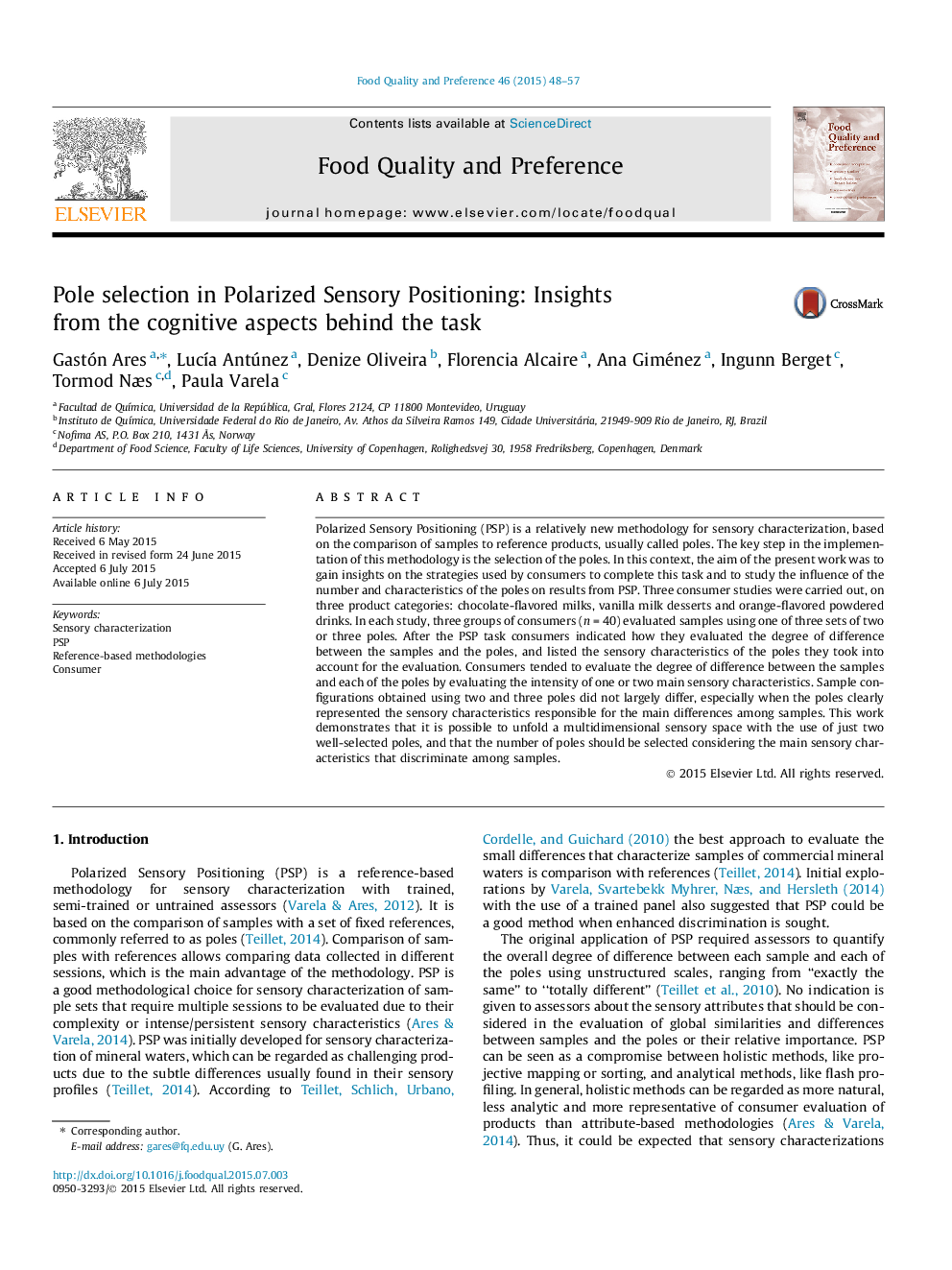| کد مقاله | کد نشریه | سال انتشار | مقاله انگلیسی | نسخه تمام متن |
|---|---|---|---|---|
| 4316949 | 1613151 | 2015 | 10 صفحه PDF | دانلود رایگان |
• The effect of the number and characteristics of the poles on results from PSP was studied.
• Consumers completed PSP tasks by focusing on specific sensory attributes.
• Sample configurations obtained using two and three poles were similar.
• Pole selection should depend on the characteristics that differentiate samples.
Polarized Sensory Positioning (PSP) is a relatively new methodology for sensory characterization, based on the comparison of samples to reference products, usually called poles. The key step in the implementation of this methodology is the selection of the poles. In this context, the aim of the present work was to gain insights on the strategies used by consumers to complete this task and to study the influence of the number and characteristics of the poles on results from PSP. Three consumer studies were carried out, on three product categories: chocolate-flavored milks, vanilla milk desserts and orange-flavored powdered drinks. In each study, three groups of consumers (n = 40) evaluated samples using one of three sets of two or three poles. After the PSP task consumers indicated how they evaluated the degree of difference between the samples and the poles, and listed the sensory characteristics of the poles they took into account for the evaluation. Consumers tended to evaluate the degree of difference between the samples and each of the poles by evaluating the intensity of one or two main sensory characteristics. Sample configurations obtained using two and three poles did not largely differ, especially when the poles clearly represented the sensory characteristics responsible for the main differences among samples. This work demonstrates that it is possible to unfold a multidimensional sensory space with the use of just two well-selected poles, and that the number of poles should be selected considering the main sensory characteristics that discriminate among samples.
Journal: Food Quality and Preference - Volume 46, December 2015, Pages 48–57
